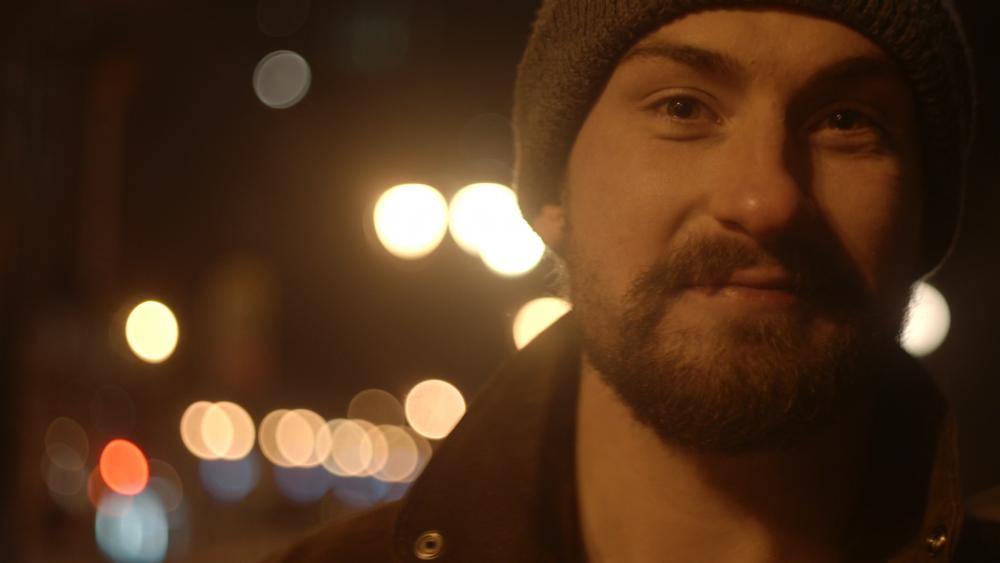Leaderboard
Popular Content
Showing content with the highest reputation on 01/26/2018 in all areas
-
8K 120 fps in 10 bits HDR internally in ProRes or Cineform 15 stops of dynamic range 16 bits sensor Super clean ISO 25,600 Better IBIS DPAF $999 Anything else?6 points
-
Or you can wait for the real world to catch-up with the standards, saving yourself a shitload of cash. 4K hasn't even overtaken 1080 yet. And now HDR has made the non 10-bit 4K panels obsolete? Early investing in hardware only benefits manufactures.3 points
-
Give it a couple of years, yeah. That's reasonable. I won't try to shoot a wedding in HDR now or in summer. I do, however, have some more ambitious shorts in planning. The visual quality of which concerns me now. In short: I think so. My iMac display is *not* HDR, but it has ~500 nits. LCD, means blacks are grey. I have it backlit with a 6500°K LED bar for perceived contrast. Can't stand to watch Netflix on my ~4 year old Samsung TV - anymore. In comparison, all images look muddy and faded. Once it is replaced by an HDR-TV, it's clear to me that I wouldn't want to invest any effort into producing rec_709 images any further. There are two sources that discuss HDR vs Resolution vs Brightness in detail: 1. the Yedlin "Resolution Myths Debunked" video. The bottom line of which is, with true 1080p, we have passed a threshold. We won't be able to see individual pixels at reasonable viewing distances. What is more, since all images are scaled - always! - an upscaling on a device with bigger resolution will improve the perceived resolution dramatically. HD on a UHD display looks better than UHD on an HD display. Fact. Resolution is only good if you can't see (or rather feel) it's limits. So resolution must be "invisible". Resolution is often confused with perceived sharpness. Beyond the said threshold, contrast adds more sharpness, brilliance, clarity than more pixels. 2. The lectures on rec_2020, which include 4k (UHDTV1), 8k (UHDTV2), HFR, WideColorGamut and HDR. This is complicated matter, but all engineers agree that an extended dynamic range contributes most of all factors to perceived image quality. As a side-note, regarding resolution: it's an indisputable *fact* that 4k @ standard frame rates is only HD for moving images. 4k demands bigger pictures (interchangeable with shorter viewing distances, as in retina display), and the motion blur then diminishes the spatial resolution. 50/60p for 4k, 120p for 8k. Like it or not. You can't be a pixel peeper and resolution fundamentalist and at the same time insist on cinematic 24p. We have to define the word benefit here. At the present point, it may not be reasonable or economically advisable to buy the hardware. If these were generally accepted arguments, EOSHD would probably die.2 points
-

Critical Looks at Demo Reels
EthanAlexander and one other reacted to webrunner5 for a topic
But I can see why people are interested in a Kinefity. They are pretty cheap price wise. When I was looking at buying something big time years ago no way could I afford a Alexa, or even a C300 when it first came out. So Kinefity. AJA, BM are tempting. They are sort of affordable. And if you are dead set on 4k I guess you don't have much choice. None of the old stuff is 4k other than Red. And well enough said about affording a total Red kit. There always is the Canon 1DC. Media cost more than the camera but..2 points -
Next up: JVC GY-LS500 predictions...2 points
-
Panasonic GH6 - Predictions
IronFilm and one other reacted to Rinad Amir for a topic
i love that idea, you forgot RAW video it must have Raw!2 points -
2 points
-
Panasonic GH6 - Predictions
Mark Romero 2 and one other reacted to Mattias Burling for a topic
S35mm sensor.2 points -
1 point
-
C200 - some thoughts
webrunner5 reacted to tomekk for a topic
hehe, yeah I know. I just thought I would add this small piece of information for the sake of completeness :).1 point -
How is this even constructive? We’re all here to show and learn what technology today is capable of. There’s no bad camera in the market today. We still capture visuals with them or another. Yesterday, today, tomorrow... they’re just the tools we use.1 point
-
There is NO ADAPTER supporting stabilization of a third party (non Samsung) lens when mounted on a Samsung camera. To get stabilization, you have to use a native lens. The Samsung 16-50mm f/2.0-2.8 OIS is threfore a phantastic lens, the Samsung 50-150mm f2.8 s ED OIS is great too. For wide shots it's the Samsung 16-50mm f/2.0-2.8 OIS you need, if you need a stabiized lens. When using a gimbal - as you say in your post - and need a wide lens, simply use the Samyang/(Rokinon/Walimex 12mm 2.0 manual lens without stabilization - it works great with a well calibrated gimbal, after some practice when walking and holding or operating the gimbal. Have fun!1 point
-

Kinefinity Terra 4k has landed
TheRenaissanceMan reacted to DBounce for a topic
I agree... can’t see myself forgoing Canon for this. But at the same time Canon really messed up by not including a middle codec on the C200. If not for that omission I would have purchased it. An I know I’m not alone in that sentiment.1 point -

Lenses
kidzrevil reacted to TheRenaissanceMan for a topic
1 point -
Sony A7R III review - the BBC fixed Sony's colour!
webrunner5 reacted to tomsemiterrific for a topic
Just for fun I shot this on New Years eve---using Canon FD lenses: light, inexpensive, good---3 axis stabilization---what's not to like.1 point -

UHD: Panasonic HC-X1 vs Sony AX100
webrunner5 reacted to IronFilm for a topic
Agreed that I feel the sub $2K market won't see much of an improvement. Just like how point and shoot stills cameras have mostly died out, and are seeing no improvement on the low end (only 1" sensor P&S are seeing some progress forward, but at the high end of the P&S market). But the $4K market for camcorders still has a place for some self shooting journalists and such. It is not dead, yet.1 point -
If you want to stick with an camcorder with an integrated lens then I say stick with your AX100 for now. As you're not going to get a leap forward within that category, unless you move to S35 interchangeable lenses cameras such as a Panasonic EVA1. If you needed some specific feature such as timecode or SDI output, then it is worthwhile spending money to upgrade your AX100. But for general image quality? You could do a little better, but not massively better with your current budget. I'd say wait out another generation of cameras, and then you'll see a leap forward that is big enough to justify spending money to upgrade your AX100. For instance maybe the upgrade to the Panasonic DVX200 might use the new sensor in the GH5S? And maybe it will add 4K 10bit internal? That could be a nice camcorder to have!1 point
-

Critical Looks at Demo Reels
webrunner5 reacted to IronFilm for a topic
I'm probably guilty of splitting hairs here, but I'd say the best at each price point are: Low-mid: Panasonic EVA1 Mid-mid: Sony FS7mk2 High-mid: Panasonic Varicam LT1 point -
The UHD Alliance publishes different standards for cell phone, tablets, and notebook computers.1 point
-

Critical Looks at Demo Reels
webrunner5 reacted to IronFilm for a topic
Another key point to remember about these listings of cameras used at film festivals, is they're always backwards looking. Never looking forward to the future. As films can takes years to make. So naturally the choices they made in pre production years ago shouldn't necessarily be the same you make in 2018. For instance I reckon the Panasonic EVA1 is clearly the best general purpose low-mid end cinema camera today. But you would never see it on that list, as it is too new. Likewise Canon 5Dmk3 is going to be overrepresented because a film might have started being made 5yrs ago yet only reached release last year. Also, people often use what they have at hand rather than what is technically the "best". Because what you have at hand is the best option! Thus often that is a 5Dmk3 for many people. That doesn't mean however you the keen new filmmaker should buy a 5Dmk3! Anyway, the lists can still be informative for the broad picture they paint. Such as the sheer dominance of Arri on the higher end. And the reports I read from old timer ENG guys of health issues decades down the road is scary. Just because they went through that, doesn't mean we have to. My mate with the RED ONE would pop a few painkillers over the course of the feature film. And he is a young guy! Younger than me. A Sony PMW-F3 is near the max of what I'd want to do for a whole feature if in a one or two person camera department. If I'm going ahead with the feature film this year as DoP with a RED ONE then I'm absolutely buying an easyrig and having a good 1st AC to assist. Hopefully that will make it bearable. Although I'm fine with the idea of using a RED ONE (or Arri Alexa Classic, similar ish size) with a teeny crew for single day shoots. Or even two / three days. But if it is a multi day long shoot then the grind will get to you. And I care about my long term future prospects. ENG shoots have totally different expectations and standards when it comes to camera movement and lighting, just to name two aspects. Of course, when doing ultra ultra ultra low budget features then they do have much more in common with an ENG shoot than a hundreds of millions of dollar hollywood production.1 point -

Critical Looks at Demo Reels
jonpais reacted to webrunner5 for a topic
Oh come on I spent years handling 22 to 25 pound ENG cameras, weight is not a big problem. But I am not a small person. I say it is a benefit for stability. You don't need a crew if you are using fast F stops. Not everything is snap focus. There ain't one damn more thing on a Arri Alexa than there was on ENG cameras I used years ago. I didn't have a Crew to help me. Hell there was damn near that much stuff on the AF100A I had. All Cine cameras a complicated as hell you know that .Any of these Cine cameras are big geared out. Hell look how big Jon's rig is for a damn GH5. You are not going to make many movies with a striped down LX100 bare.1 point -
Say Your Goodbyes to SDR!
webrunner5 reacted to markr041 for a topic
Yes, seeing HDR on an HDR-capable phone really shows off what HDR does. Who would have thought phones would beat TV's for usability - YouTube just puts the phone right into HDR mode when you push play (and full screen) in the app. Bam! it is really difficult then to go back to dynamics-compressed, dull SDR video!1 point -

Critical Looks at Demo Reels
EthanAlexander reacted to IronFilm for a topic
With the MASSIVE caveat of *if* you have: 1) the crew / schedule to support it 2) a spine to cope with the weight Bet there is no chance the Raven would ever have been announced by RED if not for Blackmagic and Kinefinity. I'm shocked he is surprised. Well, no. I'm not. As I've long ago felt that No Film School writers are not necessarily that clued in. This commentator nailed it. Back when I was starting out, and No Film School was new, I almost religiously read their website. These days I never check up on No Film School.1 point -

Critical Looks at Demo Reels
Aussie Ash reacted to Raafi Rivero for a topic
Kinefinity and BlackMagic are doing the same thing RED did for the industry a generation ago - putting cinema-capable tools in the hands of filmmakers at a fraction of the mainstream industry's price structure. Would Panasonic, Sony, or Canon be offering Raw recording in their sub-$10k cameras without those two brands pushing the envelope? Heck, would Red have even released the Scarlet package without the downward price pressure of those two brands? The big players have had the technology for years. Protecting the higher-priced models explains the strangely handicapped C200 - you can have massive Raw files or an 8-bit codec (?!? what? ) but if you want a decent codec and Raw you still have to pay for the next tier up. Are Kinefinity or BM perfect, no? But BlackMagic made a much better camera than AJA, while using the same sensor as the aforementioned AJA Cion. The difference? Both BlackMagic and Kine have excellent color science. As evidenced by the Cion, color science is not an insignificant part of making a camera.1 point -

Critical Looks at Demo Reels
mercer reacted to webrunner5 for a topic
But yeah Glenn you are right about using a Canon. I am sure some of the reasons for a 5D mk III was because it was cheap if it was destroyed in a crash, or only be in a small space they needed it to be in. But it looks like this year and last from my memory there was and is a lot of Canon C300, C300 mkII's in them. So a used C300 might be a cheaper way to go sort of big time. They don't have DPAF on the original one, but for a first effort into the C Line Canon hit a home run on it. And it came out in late 2011. Amazing tech for the time. Still hard to beat today! And even older a Arri Alexa was introduced in April 2010. A more amazing camera.1 point -

Critical Looks at Demo Reels
mercer reacted to webrunner5 for a topic
Sure they have after crapping around for 4 years. I am sure even Arri shit around for years also at the start. But I doubt the average person on here can afford to HOPE Kinefity, AJA Cion stay in business, or ever get better that is what I am saying. Hell on paper most of us have been a Ginnie Pig for Blackmagic over the years. They have made it past the hump. But not without a lot of hiccups. This stuff is risky as hell for going to startups if you are not rolling in the dough. I like new stuff, who doesn't, but buyer beware like hell for all it cost to even rig a GH5, let alone a Kinefity 4k. If it fails, Oh Boy. Here is a another breakdown on cameras. https://nofilmschool.com/2018/01/Canon-C300-ALEXA-Sundance-Cameras-Lenses1 point -
Critical Looks at Demo Reels
EthanAlexander reacted to mercer for a topic
I think you posted a similar link last year which also showed a strong showing for Arri and Canon and a small showing for Panasonic.. In fact, I was surprised to see how many filmmakers used the 5D Mark iii last year and that was one of the many reasons I chose it over the GH5. But I don’t agree with you about Kinefity, I think they released an amazing camera with the Terra 4K.1 point -

Panasonic GH6 - Predictions
zerocool22 reacted to Andrew Reid for a topic
15 stops dynamic range in raw video. Dual Pixel AF. Multi-aspect ratio sensor (1.86x crop in Cinema 4K). V-LOG built in as standard.1 point -
Say Your Goodbyes to SDR!
webrunner5 reacted to markr041 for a topic
The easiest way to see HDR content is with a "Mobile" HDR-compatible phone, like the Samsung Galaxy S8 or S8+ or Note 8 (HDR10 and I think HLG too). The YouTube app recognizes the capability on these phones and switches the video to HDR mode (it is labeled as such) when played full screen if the video, again, has the HDR metadata. The brightness of the screen increases substantially when play starts, and you can see the difference from the same video that you can play in a small box, which will be SDR. Sure it is not "true" HDR like on a big screen TV - but it is actually certified as true mobile HDR. And it comes close to the big screen HDR experience and is really impressive. The notion that HDR is worth it is demonstrated just by this. If you want to show your friends your HDR video in HDR, just whip out the relevant phone and play it using the YouTube app. This is the Samsung PR about the phone: "The Galaxy S8 is the first ever Mobile HDR Premium certified smartphone, so you can watch shows and films the way they were meant to be seen. And the Quad HD+ Super AMOLED display brings films and shows, games and images to life in vivid detail." *I think some Sony phones are HDR capable as are LG phones. I just have the Galaxy S8, so I can just attest on that phone this really works. It is so far the only phone (and S8+) certified as Mobile HDR Premium. So what are the requirements for Mobile HDR Premium on smartphones? 10bit, DR of 0.0005-540 nits, 90% of P3 color gamut. And do not scoff at the nits - if you hold the phone up close as one normally does for viewing, that level of nits is almost blindingly bright. The link to the UHD Alliance press release on Mobile HDR Premium: https://alliance.experienceuhd.com/news/uhd-alliance-defines-premium-viewing-experience-battery-operated-devices1 point -
Panasonic GH6 - Predictions
zerocool22 reacted to Rinad Amir for a topic
Raw hd recording internally would be nice1 point -
Critical Looks at Demo Reels
IronFilm reacted to Mark Romero 2 for a topic
Thanks for the link!!! Yeah, a very interesting read for us "color nerds." I really liked the insights in the varicam review on how Arri color science handles highlight saturation compared to Panasonic and Sony. (The rolloff of my a6500 has been bugging me lately and I think that article has pointed me in the right direction in terms of grading my Sony footage.)1 point -
Lol. Allow me to disagree. Sigma make great lenses and they do not make you pay twice what it worth like everyone else. They make for great videos and pictures. That's what I want.1 point
-
Have any footage of this? Would love to see it.1 point
-
Canon 1DX-II vs. 1DC - Which one would you buy?
TwoScoops reacted to independent for a topic
Then you should know how hard it is. With a big sensor and a still lens? Do you have any idea how difficult it is to keep unrehearsed movements in focus, while framing the shot and moving the camera? No offense, but you're full of shit. It's easy as being a "Cameraman"? Yeah, if you're shooting on a documentary camera - but not something like the 1DC, which is what we're talking about. Ever hear of a "focus puller?" There's a reason why there's a specialized job for this task. A focus puller has one of the most important jobs on any film shoot - it's one of the hardest skills. And anybody who actually has experience on a film shoot would know this obvious fact. Either you're talking out of your ass or you're the best focus puller in the world. Or, in your words, just a "cameraman." If you've never heard of a focus puller, it's time to start keeping your mouth shut and start learning.1 point




